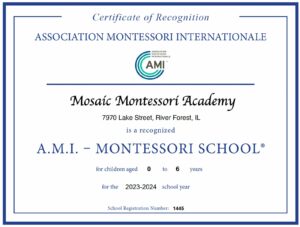Montessori Activities: Sensorial
Sensorial Education
Humans use their five senses-hearing, touch, sight, smell, and taste-daily. As children grow, they naturally desire to explore the world around them through touch. Maria Montessori emphasized the importance of the senses in a child’s development. Thus, sensory exploration plays a vital role in how children learn about the world around them.
The classroom environment is carefully designed to engage the senses, encouraging the child to explore and make discoveries on their own. Through hands-on, sensory-based learning, children develop a deeper understanding of concepts, from basic shapes and colors to more complex ideas like size, texture, and even sound.
The sensory materials in an Infant Toddler Montessori classroom, such as the stereognostic bags, baking, or sensory bins, are designed to help children refine their senses. Each material offers a unique experience, encouraging children to compare, contrast, and differentiate through direct touch.
Montessori Activities Lead To Sensory Awareness
In Montessori classrooms, sensory activities play an important role in a child’s development. These activities are designed to engage more than one sense at a time, allowing the child to explore, classify, and interpret the world around them. Below are a few examples of common sensorial activities that children enjoy and benefit from:
Stereognostic Bag
This activity is a favorite in the classroom. Through this sensory activity, the child will gain the ability to recognize and identify objects through touch, without viewing the object. The ability to integrate tactile sensations for object recognition is something we will use in everyday life.
Baking
Baking activities are rich sensory experiences that engage many senses simultaneously. Children can smell the ingredients, feel the textures of flour and dough, hear the mixing sounds, and see the final baking outcome.
Sensory Bin
Sensory bins are activities designed to support a child’s sensorial development by offering hands-on experiences that engage multiple senses. When thoughtfully curated, these bins provide valuable opportunities for children to explore and stimulate their visual, tactile, and auditory senses.
In summary, Montessori sensory activities foster sensory awareness by providing children with opportunities to refine and integrate their five senses effectively.

